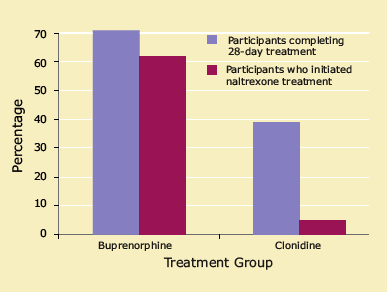
Brief Description
Heroin is an addictive drug that is processed from morphine and usually appears as a white or brown powder or as a black, sticky substance. It is injected, snorted, or smoked.
Street Names
Smack, H, ska, junk More at Street Terms (Office of National Drug Control Policy Web Site)
Effects
Short-term effects of heroin include a surge of euphoria and clouded thinking followed by alternately wakeful and drowsy states. Heroin depresses breathing, thus, overdose can be fatal. Users who inject the drug risk infectious diseases such as HIV/AIDS and hepatitis.
Statistics and Trends
In 2008, 453,000 Americans age 12 and older had abused heroin at least once in the year prior to being surveyed. Source: National Survey on Drug Use and Health (Substance Abuse and Mental Health Administration Web Site). The NIDA-funded 2008 Monitoring the Future Study showed that 0.9% of 8th graders, 0.8% of 10th graders, and 0.7% of 12th graders had abused heroin at least once in the year prior to being surveyed. Source: Monitoring the Future (University of Michigan Web Site)
Source:NIDA
NIDA InfoFacts: Heroin
Heroin is an opiate drug that is synthesized from morphine, a naturally occurring substance extracted from the seed pod of the Asian opium poppy plant. Heroin usually appears as a white or brown powder or as a black sticky substance, known as “black tar heroin.”
How Is Heroin Abused?
Heroin can be injected, snorted/sniffed, or smoked—routes of administration that rapidly deliver the drug to the brain. Injecting is the use of a needle to administer the drug directly into the bloodstream. Snorting is the process of inhaling heroin powder through the nose, where it is absorbed into the bloodstream through the nasal tissues. Smoking involves inhaling heroin smoke into the lungs. All three methods of administering heroin can lead to addiction and other severe health problems.
How Does Heroin Affect the Brain?
Heroin enters the brain, where it is converted to morphine and binds to receptors known as opioid receptors. These receptors are located in many areas of the brain (and in the body), especially those involved in the perception of pain and in reward. Opioid receptors are also located in the brain stem—important for automatic processes critical for life, such as breathing (respiration), blood pressure, and arousal. Heroin overdoses frequently involve a suppression of respiration.
After an intravenous injection of heroin, users report feeling a surge of euphoria (“rush”) accompanied by dry mouth, a warm flushing of the skin, heaviness of the extremities, and clouded mental functioning. Following this initial euphoria, the user goes “on the nod,” an alternately wakeful and drowsy state. Users who do not inject the drug may not experience the initial rush, but other effects are the same.
With regular heroin use, tolerance develops, in which the user’s physiological (and psychological) response to the drug decreases, and more heroin is needed to achieve the same intensity of effect. Heroin users are at high risk for addiction—it is estimated that about 23 percent of individuals who use heroin become dependent on it.
What Other Adverse Effects Does Heroin Have on Health?
Heroin abuse is associated with serious health conditions, including fatal overdose, spontaneous abortion, and—particularly in users who inject the drug—infectious diseases, including HIV/AIDS and hepatitis. Chronic users may develop collapsed veins, infection of the heart lining and valves, abscesses, and liver or kidney disease. Pulmonary complications, including various types of pneumonia, may result from the poor health of the abuser as well as from heroin’s depressing effects on respiration. In addition to the effects of the drug itself, street heroin often contains toxic contaminants or additives that can clog blood vessels leading to the lungs, liver, kidneys, or brain, causing permanent damage to vital organs.
Chronic use of heroin leads to physical dependence, a state in which the body has adapted to the presence of the drug. If a dependent user reduces or stops use of the drug abruptly, he or she may experience severe symptoms of withdrawal. These symptoms—which can begin as early as a few hours after the last drug administration—can include restlessness, muscle and bone pain, insomnia, diarrhea and vomiting, cold flashes with goose bumps (“cold turkey”), and kicking movements (“kicking the habit”). Users also experience severe craving for the drug during withdrawal, which can precipitate continued abuse and/or relapse. Major withdrawal symptoms peak between 48 and 72 hours after the last dose of the drug and typically subside after about 1 week. Some individuals, however, may show persistent withdrawal symptoms for months. Although heroin withdrawal is considered less dangerous than alcohol or barbiturate withdrawal, sudden withdrawal by heavily dependent users who are in poor health is occasionally fatal. In addition, heroin craving can persist years after drug cessation, particularly upon exposure to triggers such as stress or people, places, and things associated with drug use.
Heroin abuse during pregnancy, together with related factors like poor nutrition and inadequate prenatal care, has been associated with adverse consequences including low birthweight, an important risk factor for later developmental delay. If the mother is regularly abusing the drug, the infant may be born physically dependent on heroin and could suffer from serious medical complications requiring hospitalization.
Source:NIDA
Buprenorphine Plus Behavioral Therapy Is Effective For Adolescents With Opioid Addiction
A new study looks at extending the role of buprenorphine for treatment of adolescents.
BY PATRICK ZICKLER, NIDA Notes Contributing Writer
Adolescents addicted to opioids responded better to buprenorphine than clonidine in a clinical trial in which all patients also received behavioral therapy. In the NIDA-supported comparison trial at the University of Vermont, adolescents who received buprenorphine attended more scheduled counseling sessions than peers who received clonidine and had higher rates of successful induction to a relapse prevention regimen of naltrexone. The study, led by Dr. Lisa Marsch, is the first published randomized controlled study of treatments for adolescents addicted to opioids.
"Heroin abuse among American teens has doubled over the past decade, and abuse of prescription opioids such as OxyContin and Vicodin has increased even more," says Dr. Marsch. "In light of those figures, it's important to have a scientific basis for selecting treatments for opioid-dependent teens. We know from previous research and clinical experience that buprenorphine and, to a lesser extent, clonidine are among the medications that have been shown to be effective for treating opioid-addicted adults, but we haven't known how helpful they can be for adolescents."

BUPRENORPHINE DETOXIFICATION SETS STAGE FOR RECOVERY Opioid-addicted adolescents who entered a detoxification program with buprenorphine were more likely than others receiving clonidine to maintain abstinence throughout a 28-day detoxification program and more likely to begin treatment with naltrexone after detoxification.
Dr. Marsch and colleagues enrolled 36 opioid-addicted adolescents, aged 13 to 18, in a 28-day outpatient treatment program. Half the participants (9 male, 9 female) received buprenorphine in tablet form, the rest (5 male, 13 female) clonidine via transdermal patch; each patient also was given a placebo resembling the other treatment. Medication dosages varied depending on each participant's weight and the amount of drug he or she reported abusing before beginning treatment; dosages of buprenorphine were in the low to moderate range of those typically given to opioid-addicted adults.
All participants also received behavioral therapy based on the Community Reinforcement Approach: three 1-hour sessions each week of counseling on methods to minimize involvement in situations that might lead to drug-taking, training to help recognize and control urges to abuse opioids, and encouragement to recruit family members as allies for abstinence. Participants earned vouchers worth $2.50 for the first opioid-negative urine sample, plus an additional $1.25 for each subsequent one, and a $10 bonus for each set of three consecutive negative samples. Continuous abstinence could earn participants $152.50 in vouchers redeemable for rewards such as ski passes, CDs, gym passes, and clothing.
Buprenorphine and clonidine both supported high rates of abstinence. Among participants who completed treatment, rates were 78 percent and 81 percent, respectively, confirmed by urine samples provided at the thrice-weekly sessions. However, nearly twice as many buprenorphine as clonidine recipients completed the 4-week treatment (72 percent compared with 39 percent). "The high rate of retention in the buprenorphine group is particularly noteworthy," Dr. Marsch says, "because long-term success in recovery is directly related to the amount of time patients spend in treatment." And, she adds, the willingness of most patients who received buprenorphine to continue treatment with naltrexone following completion of the 28-day program is similarly encouraging. Sixty-one percent of the buprenorphine group, but only 5 percent of those who received clonidine accepted naltrexone.
"Dr. Marsch's research is an important first step in systematically studying adolescents who are addicted to opioids," says Dr. Ivan Montoya of NIDA's Division of Pharmacotherapies and Medical Consequences of Drug Abuse. "We know that there are differences in the patterns of opiate abuse and addiction in young people compared with adults. We need dedicated studies like this one to understand how teens are affected by opiate drugs and how best to treat them."The next step in Dr. Marsch's research will involve a larger sample of young opioid abusers. "We want to evaluate buprenorphine's effectiveness if treatment is extended to 2 months rather than 28 days," she says. "We will also examine the most effective doses and dosing regimens for various subgroups of young patients."
SOURCE
Marsch, L.A., et al. Comparison of pharmacological treatments for opioid-dependent adolescents: A randomized controlled trial. Archives of General Psychiatry 62(10):1157-1164, 2005. [Abstract]
Source: The National Institute on Drug Abuse (NIDA): NIDA
Learn how to spot signs of heroin use at eHow
© 2018. Pathway to Recovery.
